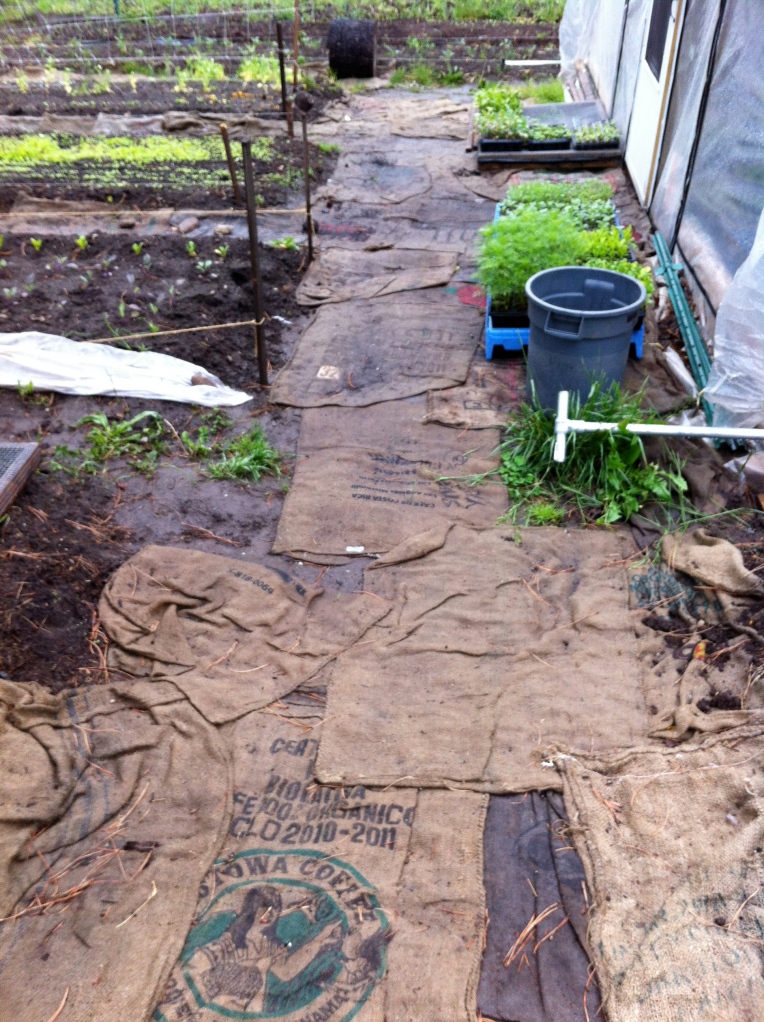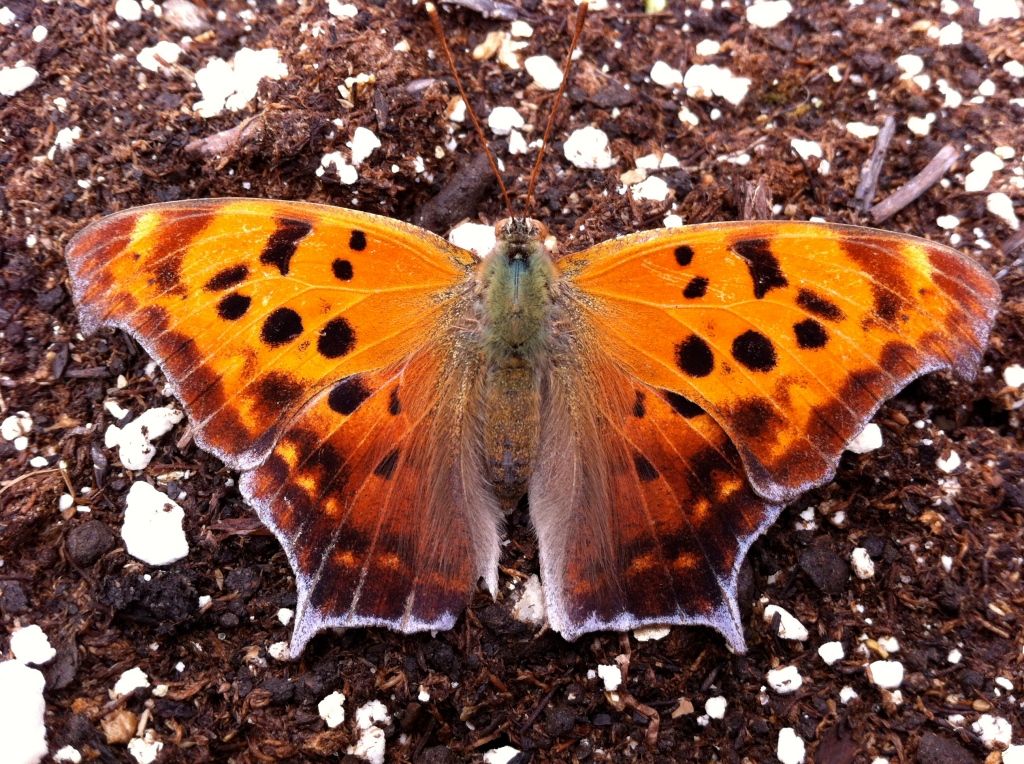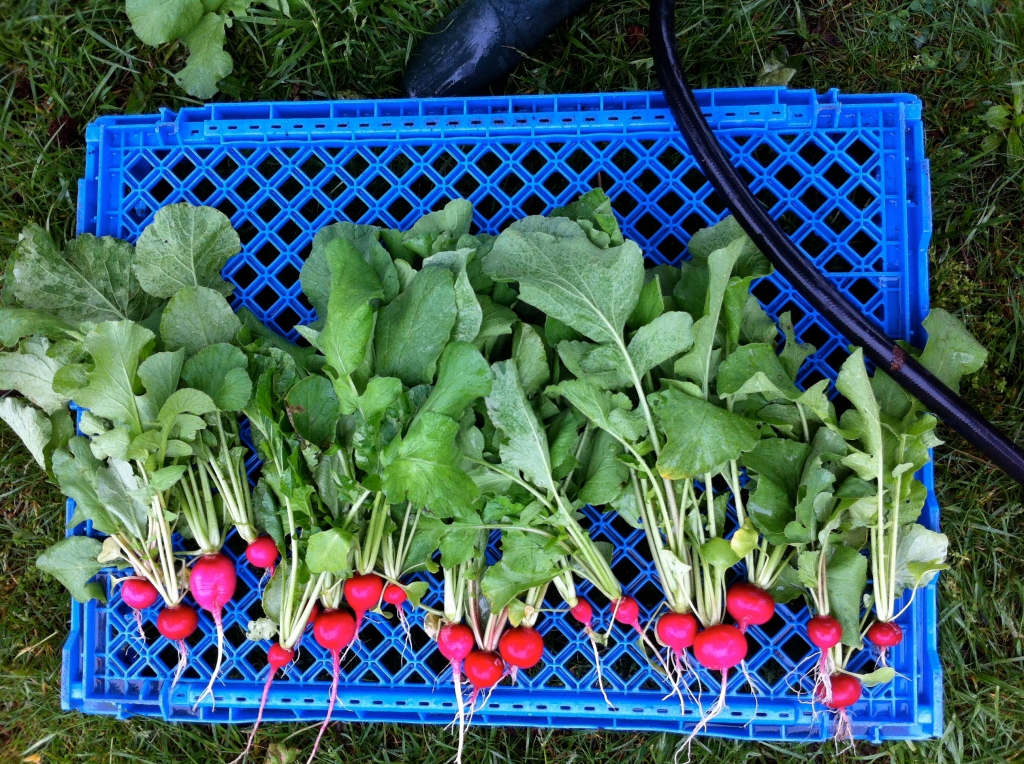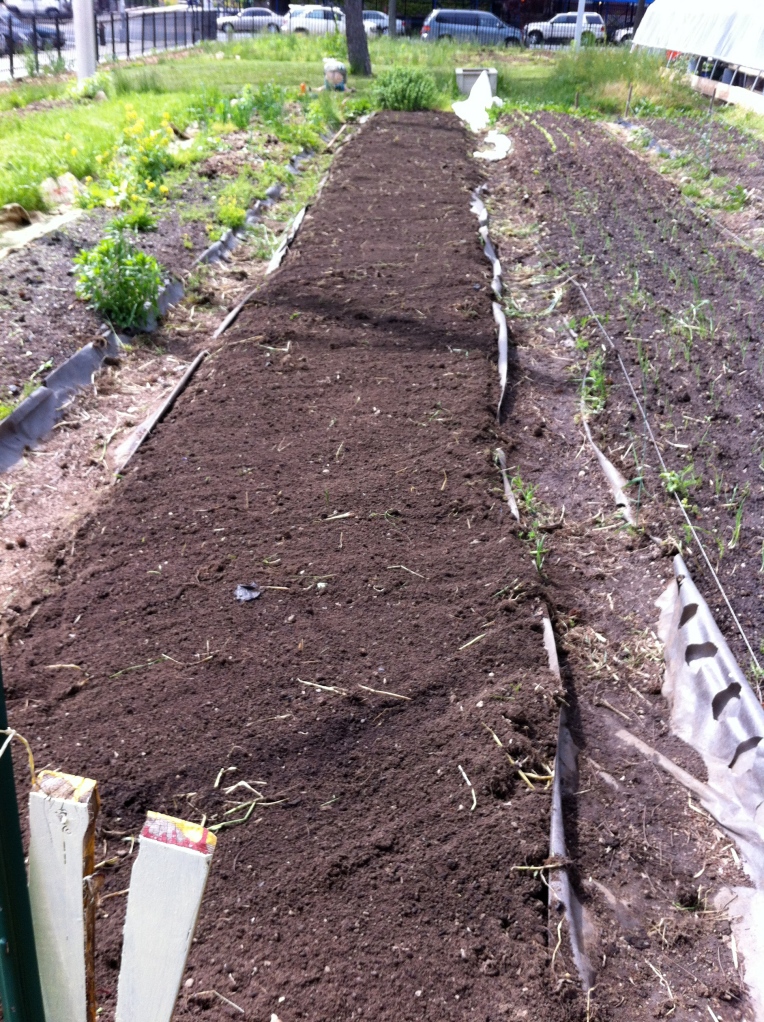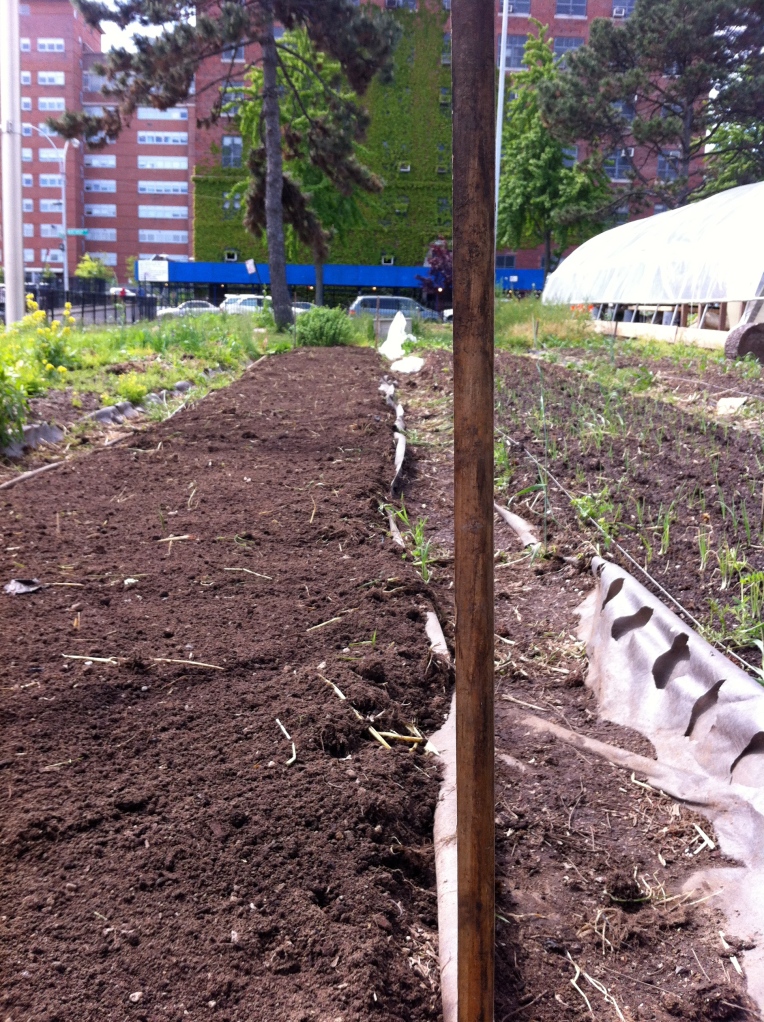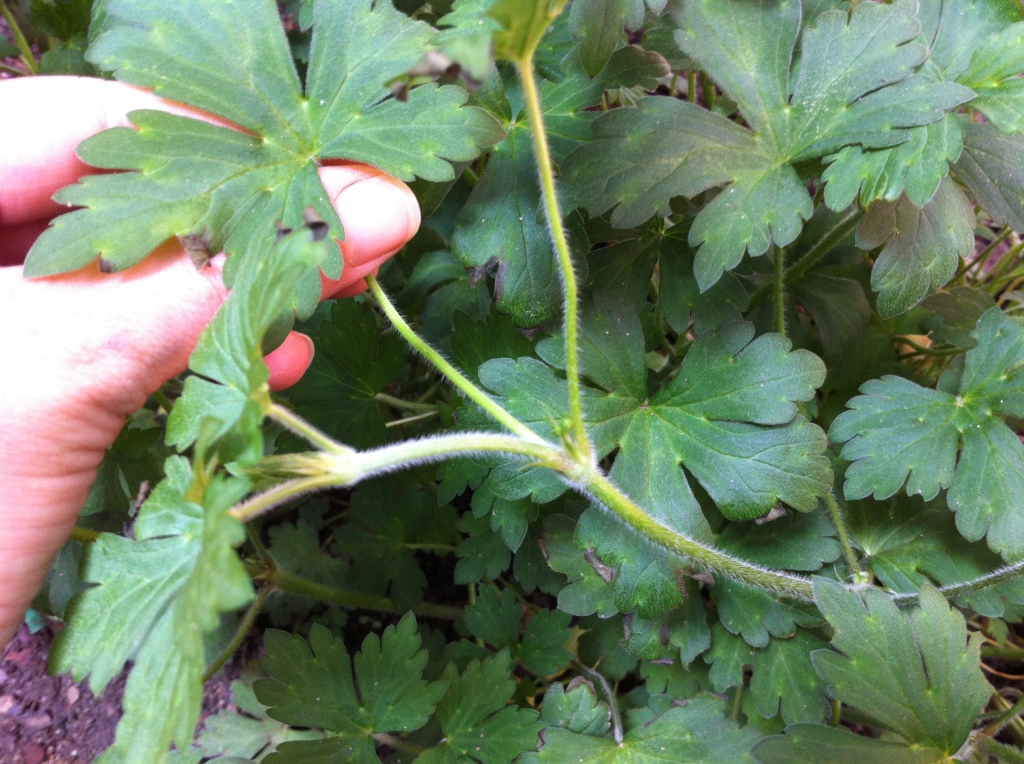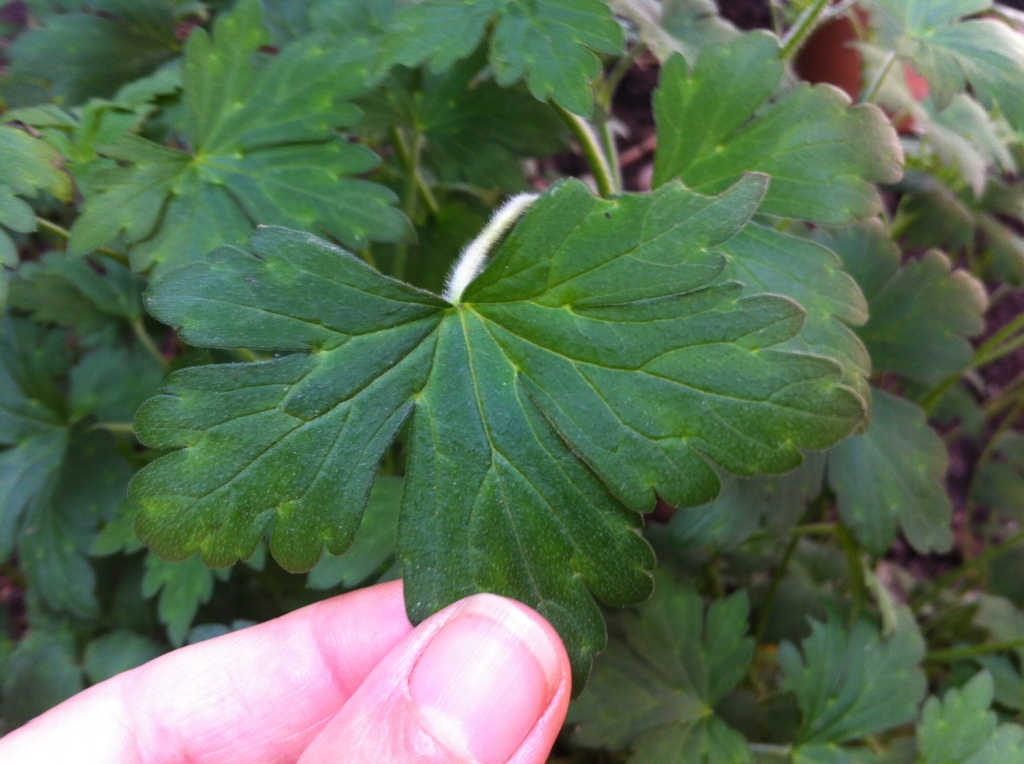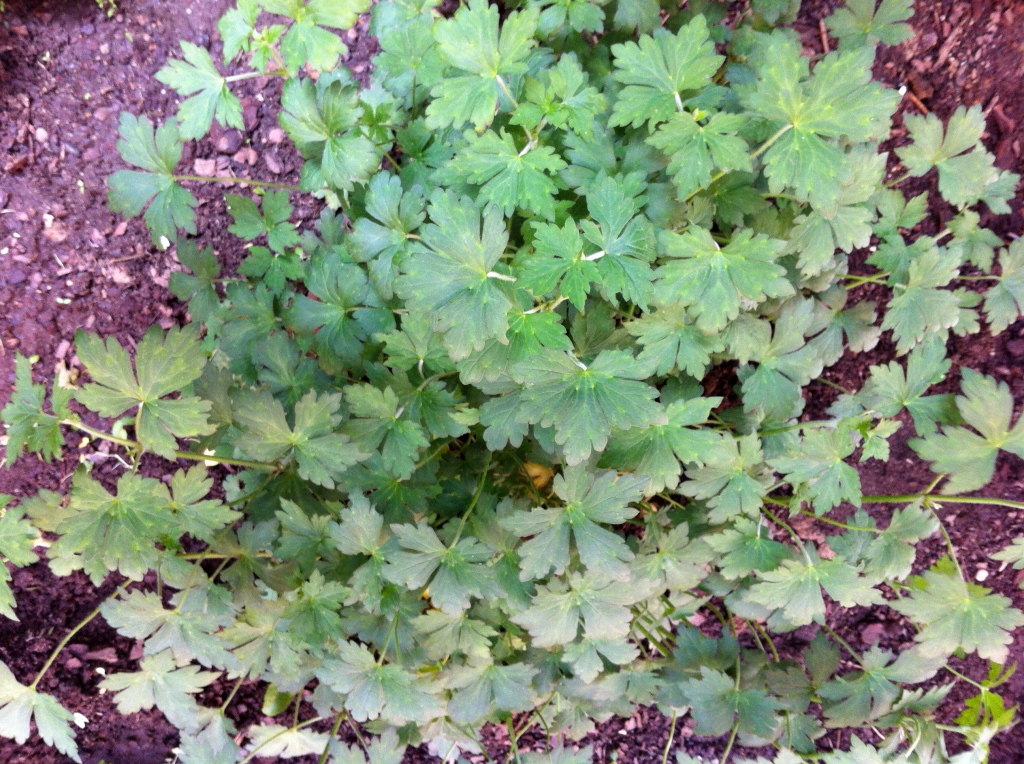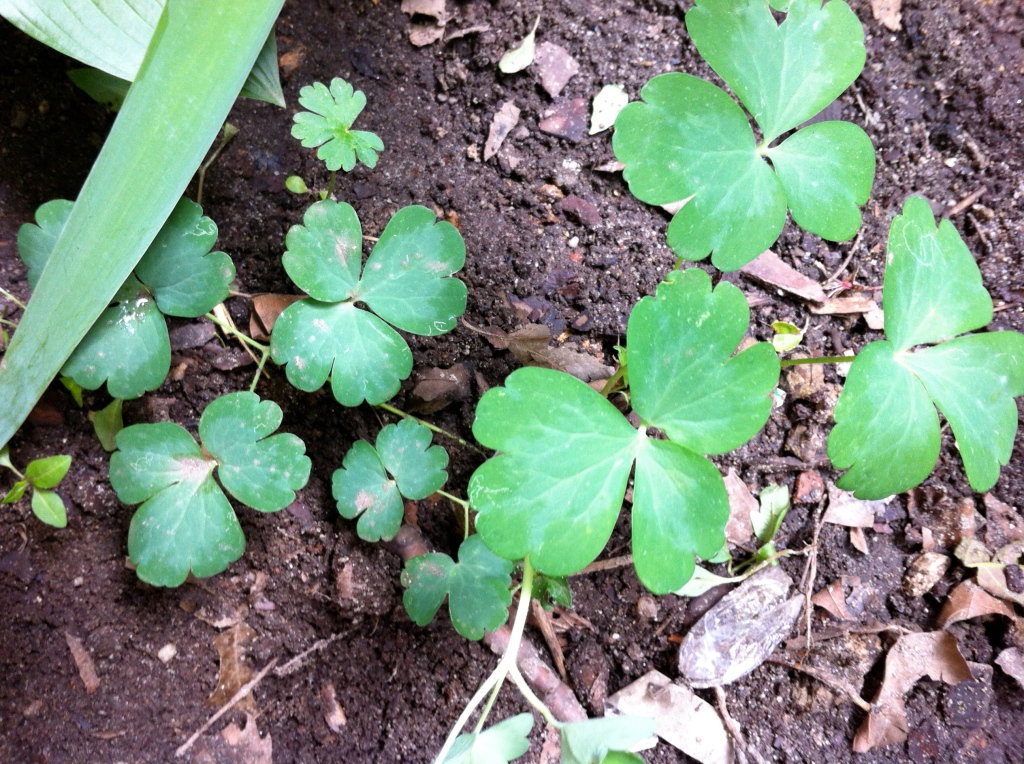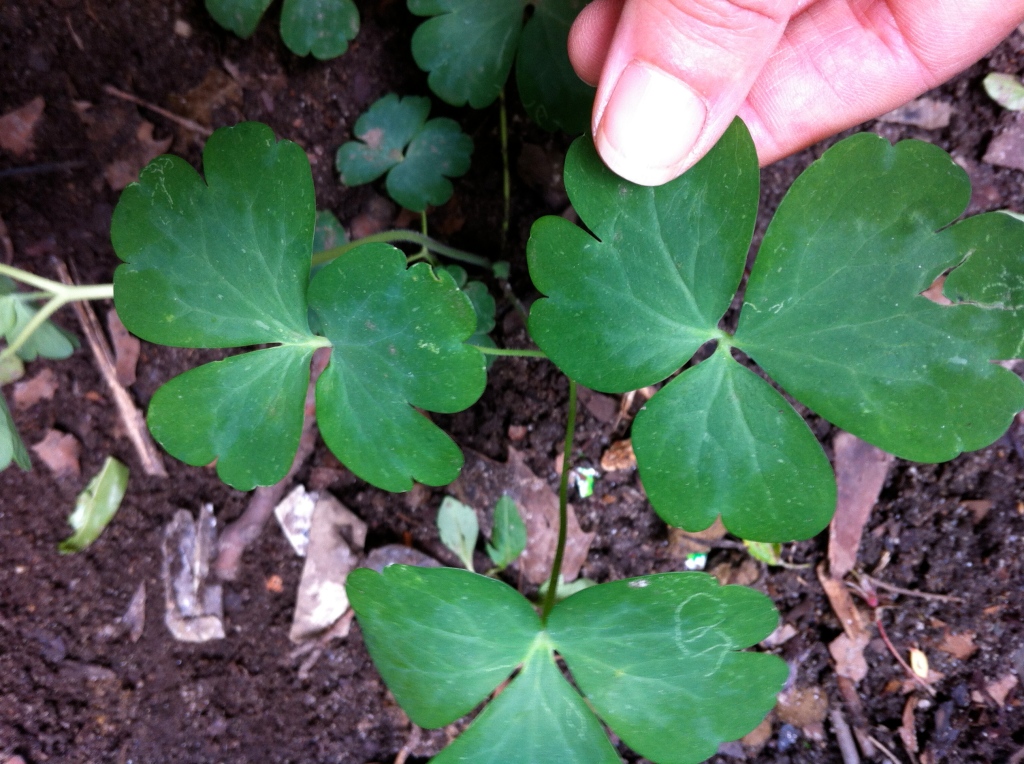Last week was another whirlwind of activity on the farm…we did a lot of bed prep which included pulling clumps of vetch and rye, side-forking and raking beds. We had an awesome tool safety demo that covered not only how to be safe with the tools and each other, but with our bodies when we use them. We also focused on how to weed and transplant quickly and efficiently without hurting your back. When you spend lots of time bent over and looking down, your back lets you know it. I’m a big fan of keeping my back happy, so I paid close attention to this part!
We also began our farm rotations. There are five areas:
- Irrigation
- Propagation
- Flowers
- CSA (Community Supported Agriculture)
- Market
Students are paired up and assigned a month-long rotation in each area. The first week of your rotation you are instructed…the following two weeks you run that rotation yourselves, and the final week you teach the next two people coming in to take the rotation over. The rotations are staggered so that you’re able to do this. I really appreciate the chance to have to show someone else the ropes – having to teach someone else how to do it really reinforces learning for me.
My rotation for the next month is propagation, and what perfect timing! There are still plenty of seeds to be sown. I’ll be spending a LOT of time in the hoophouse, not just filling and planting seed trays, but also watering everything. In the hoophouse we need to check moisture levels every few hours. Those seed trays and seedlings really can dry down that quickly on warm days. We’re in there first thing of the day, last thing of the day, and several times in between, pushing our fingers into the bottom of seed trays and pulling out seedlings to see if the bottoms are moist.
We have had a lot of instruction and discussion about proper watering techniques. We’ve learned about the importance of avoiding compacting the soil, avoiding creating a “crust,” what levels of “dry down” certain plants like or can handle, and the importance of even, consistent watering.
Every Friday afternoon we have a workshop, and last week’s focus was irrigation. I found it really helpful to talk about the roles and functions of water, and why plants need water. Honestly, I was amazed to find out how many jobs water performs for plants, and in how many ways! It’s pretty incredible. More on our Irrigation Workshop at the end of this post, but first – some photos.
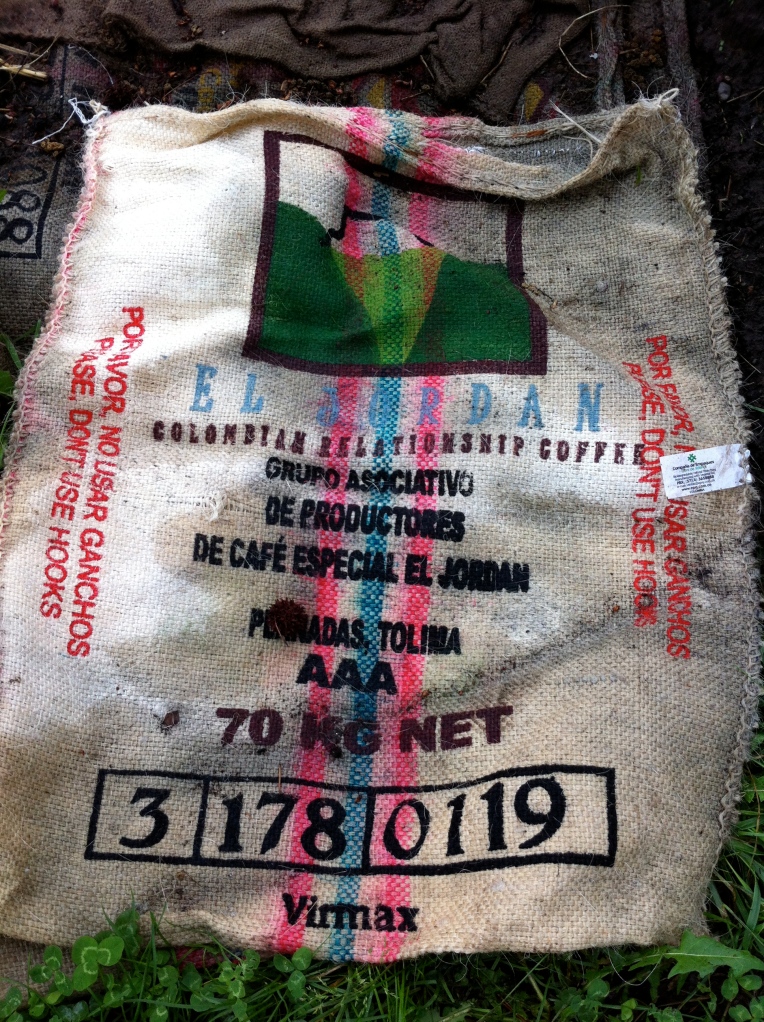
The farm gets burlap coffee bean bags donated from a local roaster…they make terrific path liners between beds!
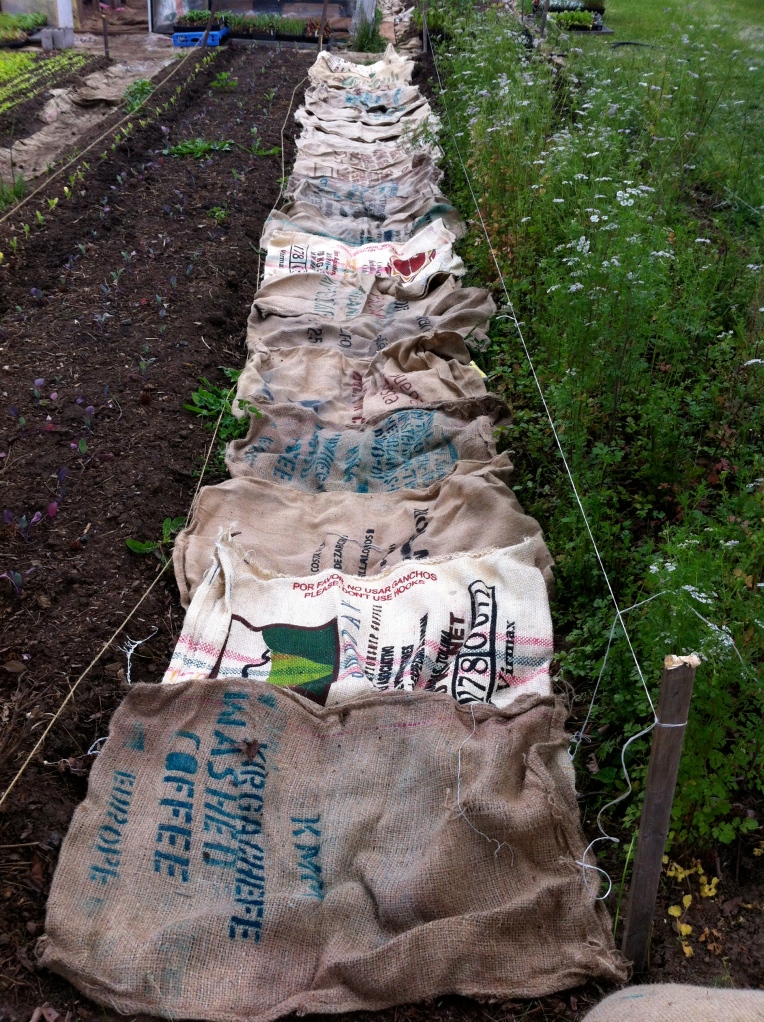
Here’s a new row of burlap sacks, ready to keep down weeds and stop the aisles from getting too muddy.
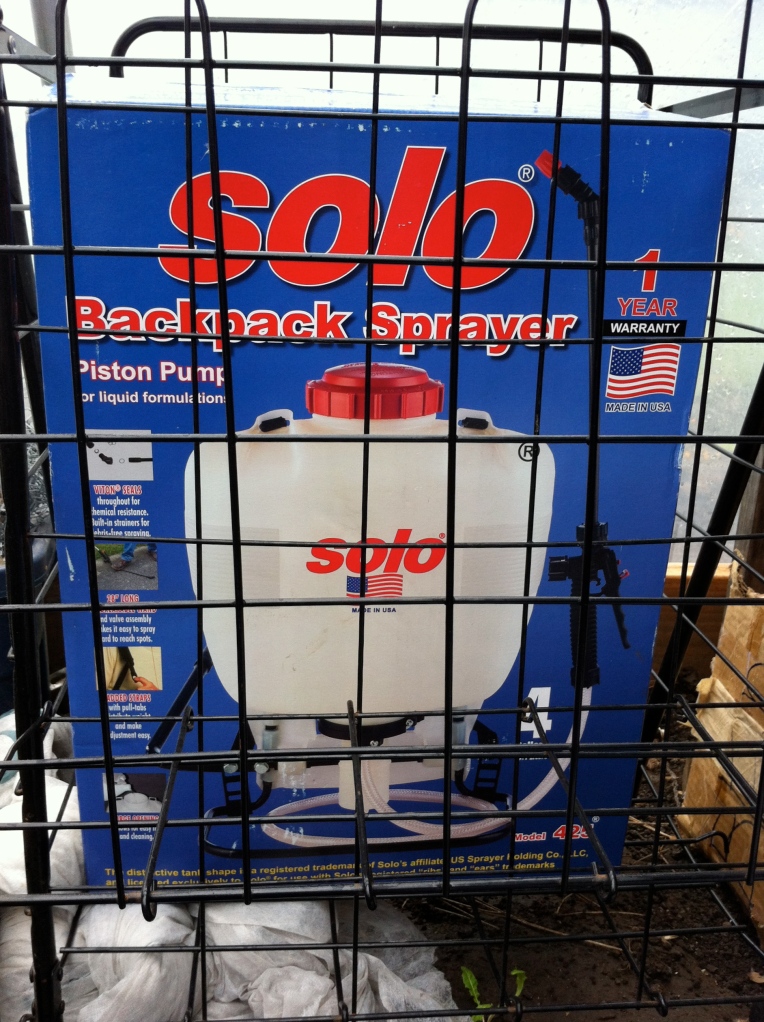
Me: “Um, are we going to get the chance to wear that thing at some point?” Instructor: “Oh yes, you definitely will.” Me: “Does it come with a pair of rocket boots?” 😉
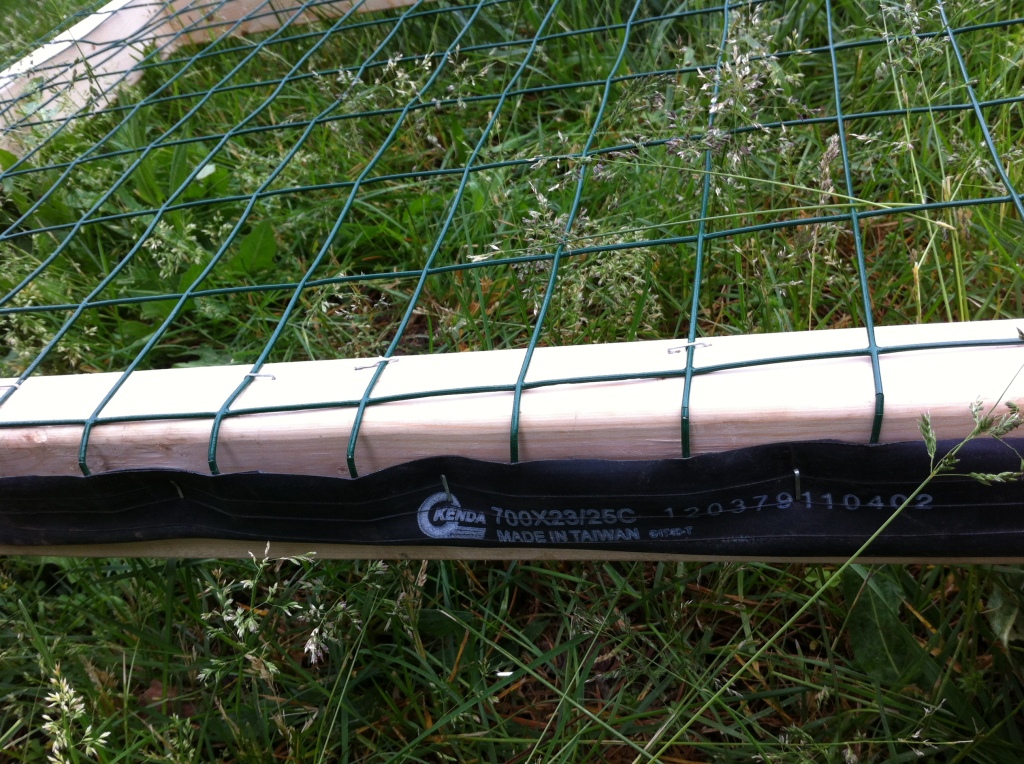
Another awesome idea – stapling bicycle tire tubes to the finished tabletops to cover sharp wire tips! Lots of bike shops have old tubes that they’d be throwing away otherwise. Handy!
Irrigation Workshop
This was the first of many lessons we will have on irrigation. I loved our discussion about the many functions of water and the roles that it plays with regard to plants and soil. Here are a few:
- water sustains biological & chemical activity & mineralization
- water promotes soil solution and the uptake of nutrients
- water provides carbohydrate building blocks through photosynthesis
- water provides plant structure / support within the vascular bundles
- water promotes maintenance of optimal temperature within the plant
- water can be used to lower freezing temperature
Through irrigation we’re also learning about soil structure and organic matter and how water is lost (through transpiration, evaporation, capillary action, evapotranspiration, and percolation) as well as environmental factors that can affect evapotranspiration: light, temperature, wind, humidity, and soil moisture.
There is so much to consider when watering. I’ve always felt it was a no-brainer in my garden at home, but I’m learning how important good watering decisions and techniques are on the farm. (the way you water can cause pest / pathogen problems, for example.)
My favorite part of the irrigation workshop was sticking our hands in the soil to test for the “field capacity” of the soil – the extent to which it has reached maximum water capacity. We reached down to the plant root level and brought up handfuls of soil which we then squeezed, examined, crumbled, and tried to make “ribbons” out of – all to determine at what capacity we thought the soil was (according to a chart.) There is an ideal moisture level, for example, when you transplant into a bed, etc.
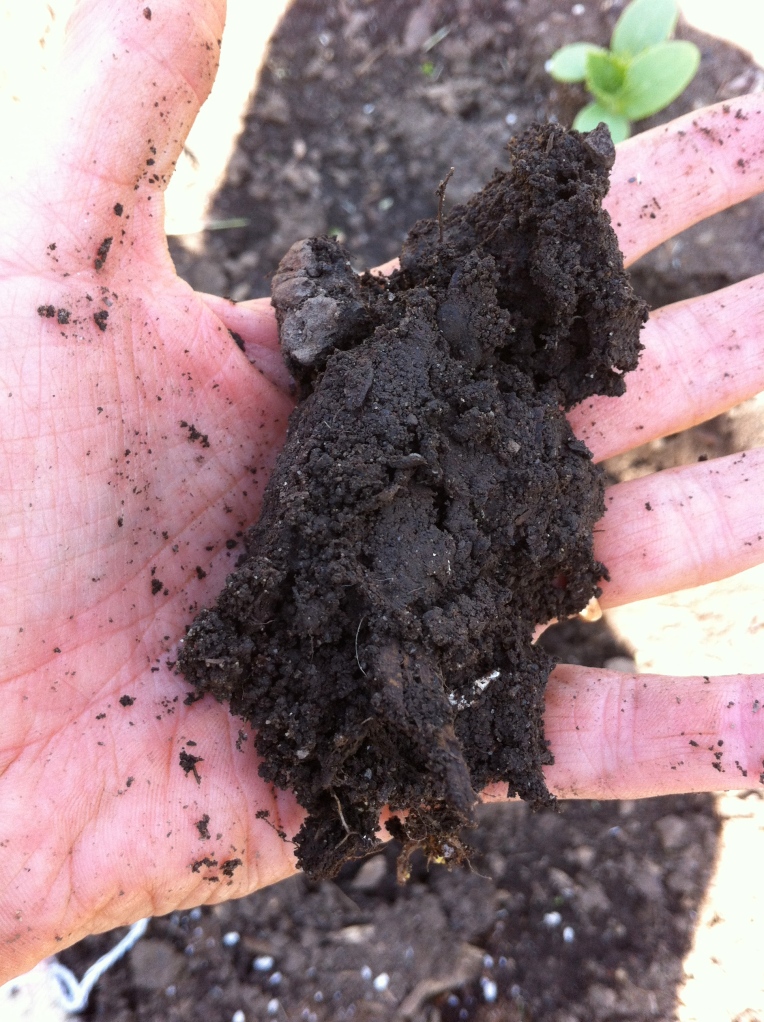
I think we determined this soil sample was in the “75% – 100% Field Capacity” category, due to the way it felt, the way it clumped, the way it broke into large “aggregates” when crumbled, and the fact that we could make a slight “ribbon” by sort of rolling it out with your thumb.
Looks can definitely be deceiving. There were plenty of beds that looked dry enough on the surface but were plenty moist when you reached down into them.
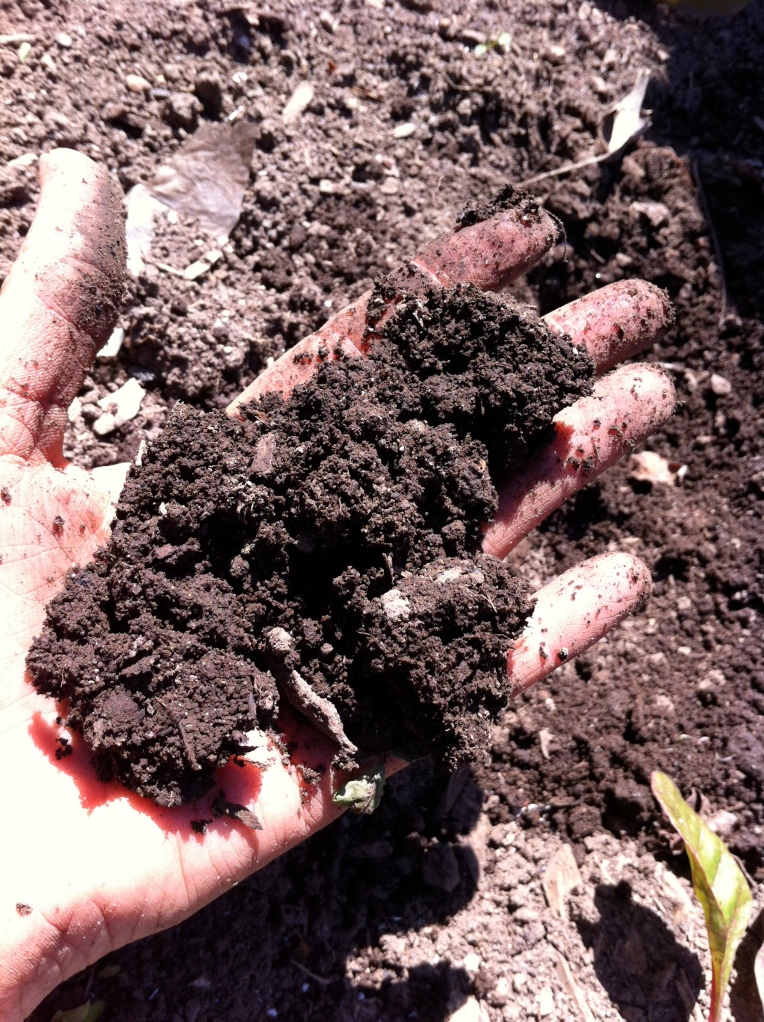
The surface of this bed looked fairly dry, but squeezing a sample of soil from it revealed it was actually pretty moist – in the 50% – 75% range on the Field Capacity “chart.” We could definitely not make a ribbon with it and it broke into smaller clumps or “aggregates” when crumbled.
The farmers say the spend a lot of time every day just testing the soil this way, all over the farm, to determine how long a particular bed should be watered.
It made me realize I’ve been watering my plants based on what the PLANTS seem to tell me, not on what the SOIL has to say. Hmm. A bit of a different story since I grow a lot of my vegetables in containers, but still. I’m learning a lot about what else to pay attention to, that’s for sure!

